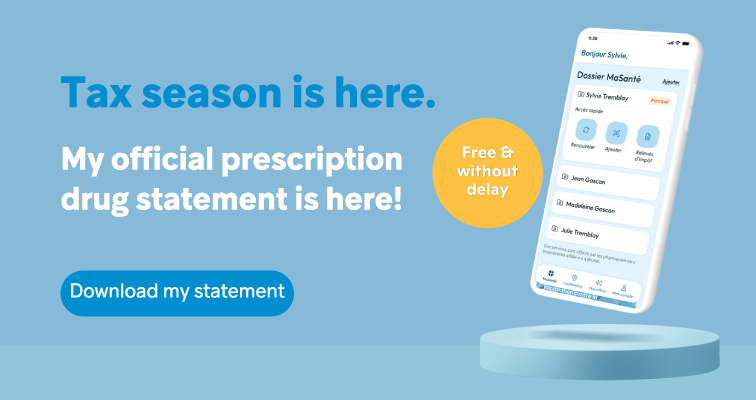Description

This medication is typically used to control blood sugar levels in people with diabetes. Even though you may not feel its effects, this medication takes effect within a few hours.
Instructions
This medication is typically used twice a day. However, your pharmacist may have suggested a different schedule that is more appropriate for you. It must be used regularly and continuously to maintain its beneficial effects. Be sure to keep an adequate supply on hand.
Like all individuals with diabetes, you should monitor your blood sugar levels regularly using the appropriate device. If you remember missing a dose within 30 minutes of taking your meal, take the missed dose as soon as possible, then take the next dose at the regularly scheduled time. If more than 30 minutes have elapsed since your meal, skip the missed dose. Do not double the next dose to catch up.
Users of this medication should be aware of the symptoms of low blood sugar (hypoglycemia), which include confusion, headache, hunger, mood changes, palpitations, rapid breathing, cold sweats and shakiness. These symptoms require immediate treatment, to bring your blood sugar back up to a safe level. This can be done with a quick source of sugar, such as: - 4 or 5 glucose tablets
- 59 to 79 mL of liquid glucose
- 15 to 20 mL (3 or 4 teaspoons) of honey, maple syrup or corn syrup
- 6 to 8 LifeSavers type candies
- 150 to 200 mL (2/3 to 3/4 cup) of fruit juice or regular soft drink (not a diet soft drink)
- 4 or 5 packets of white sugar (3 or 4 teaspoons) dissolved in water
Inform your health care professional if these symptoms have occurred, as it may mean that your diet and/or medication needs to be adjusted. It is preferable to take this medication with a meal.
Consuming alcohol with this product may cause side effects such as flushing, dizziness or nausea and increase the risk of hypoglycemia. Limit alcohol consumption during treatment.
Side Effects
In addition to its desired action, this medication may cause some side effects, notably:
- it may cause diarrhea or constipation, depending on the person;
- it may make your skin more sensitive to UV rays (e.g., sunlight, tanning lamps) - avoid exposure to UV rays as much as possible and protect yourself when out in the sun;
- it may cause low blood sugar levels, which could make you feel dizzy, shaky or weak.
- it may cause nausea or, rarely, vomiting;
- it may cause heartburn;
Each person may react differently to a treatment. If you think this medication may be causing side effects (including those described here, or others), talk to your health care professional. He or she can help you to determine whether or not the medication is the source of the problem.
Storage
As with most medications, this product should be stored at room temperature. Store it in a secure location where it will not be exposed to excessive heat, moisture or direct sunlight. Make sure that any leftover portion is disposed of safely.
Additionnal Information
This medication may interact with other medications or supplements, sometimes significantly. Many interactions, however, may be dealt with by a dosage adjustment or a change in medication schedule. Check with your pharmacist before using this medication in combination with any other medications (including non-prescription products), vitamins or natural products.
A treatment with this medication requires regular monitoring by a doctor. Be sure to see your doctor for all regularly scheduled appointments.
General Notes
When meeting with any health professional, it is important for you to share the following information:
- Your medical history and allergies (medication, food, or other);
- If you're pregnant or want to become pregnant, or if you're breastfeeding;
- If you use tobacco or cannabis or its derivatives, or if you use recreational drugs;
- The names of all the medications you take, whether you take them regularly or once in a while, including over-the-counter medications, vitamins, and natural health products.
